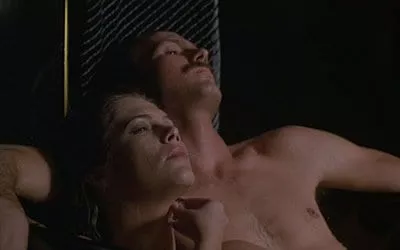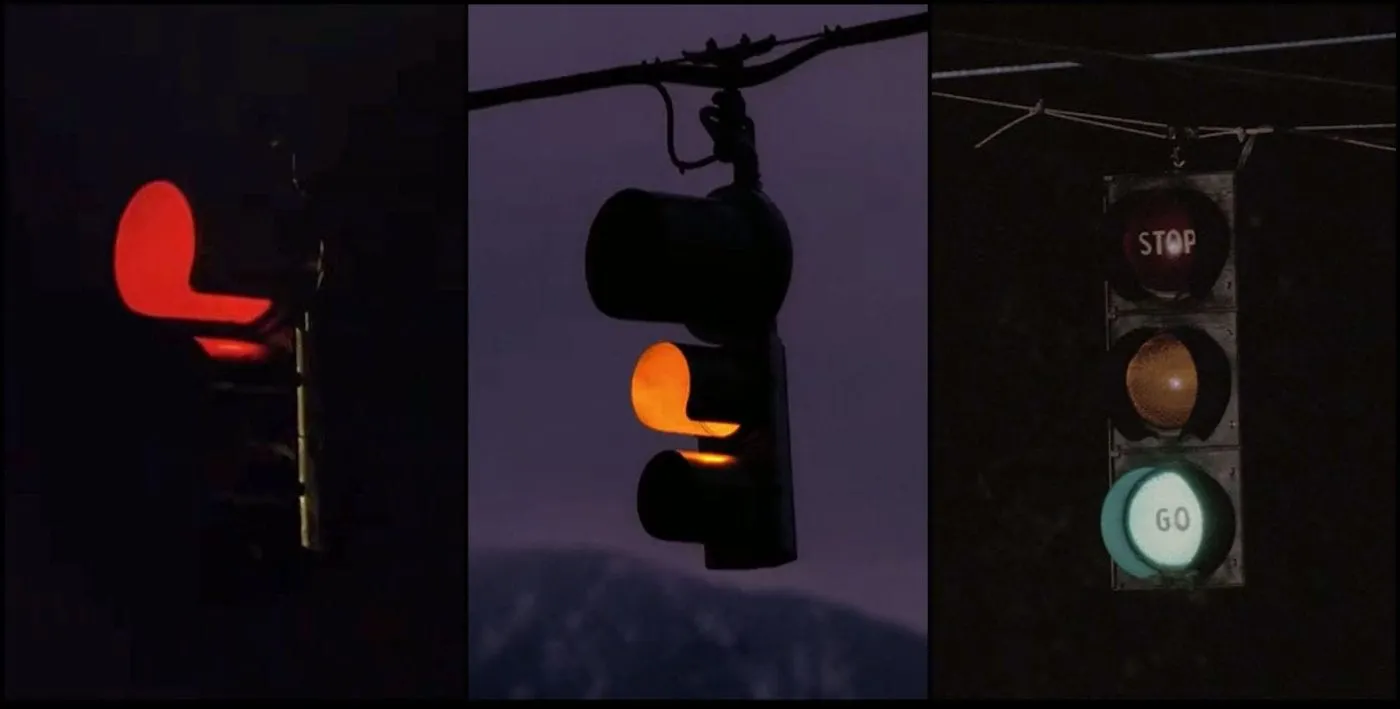Twin Peaks Backstory Investigations looks at the film and television that influenced David Lynch & Mark Frost when they created their wonderful and strange TV Show. For the second in the series, we take a look at: Body Heat.
When Agent Tamara Preston is working her way through a file found in the Bookhouse entitled “The Andrew Packard Case,” as documented in Mark Frost’s The Secret History of Twin Peaks (2016), she adds a footnote to Josie’s claim not to have seen the boathouse explosion that was believed to have killed her husband. Preston writes, “It just occurred to me that the film Body Heat, which came out a few years before this, has a strikingly similar plot twist. Maybe she saw the movie? Still worth watching, btw.”
Agent Preston’s footnote indicates a sharp awareness inside the fictional world of Twin Peaks of the influence of media and genre genealogies. As with young Dale Cooper’s devotion to The FBI Story playing a role in his adult vocation, Preston puts her knowledge of and interest in cinematic fiction—crime cinema, at that—into conversation with the case before her. It’s a significant gesture on her part, a move that resonates with the meta-media-moments when people in the original seasons of Twin Peaks watched and/or talked about the televised soap opera, Invitation to Love. That said, neither Lucy Moran nor Shelly Johnson connected that fictional realm with their own lives in the way Preston does in her footnotes to the Archive.
That Body Heat is film noir from 1981 makes it particularly intriguing as Kasdan created it to join a genre that had existed for decades and was emerging as an object of analysis in academic film studies. In fact, it was in 1981 that Foster Hirsch published one of the first monographs to focus on the genre: The Dark Side of the Screen. As Hirsch and others writing about film noir right up to the present moment have established, there are generic conventions—filming techniques such as lighting with neon and/or through Venetian blinds, character types such as femme fatales, dialogue patterns, and plot twists—that are recognizable and that creative teams try to innovate upon to achieve a balance of the familiar and the revolutionary. What’s more, each new branch of the film noir family tree is encoded with some of the anxieties and aspirations of the era in which it was produced. Body Heat is a body of evidence to be investigated.
I want to begin by pointing to two Twin Peaks connections that will leap right off the screen even to casual fans.
One occurs early in the film after the protagonist, Ned Racine (William Hurt), an attorney, and Matty Tyler Walker (Kathleen Turner), the wife of a wealthy but not above-board businessman, Edmund Walker (Richard Crenna), have begun to have an affair between weekends when Edmund is away. They’ve passed through the initial reckless passion of their relationship and are beginning to plot to avoid detection by Edmund. Ned asks Matty to confirm his guess that she has started smoking his brand of cigarettes, not out of affinity with him, but in order to keep fooling Edmund into presuming her fidelity. She remarks, “My mother told me ‘knowledge is power.’”
While Agent Preston wonders if Josie Packard may have watched Body Heat, Twin Peaks fans will recognize that Shelly Johnson and Bobby Briggs either did not or did not pay sufficient attention. If they had, they might have avoided that subtly brutal scene in which Leo Johnson forces Shelly to turn off the television and join him at the ashtray to explain why there is are butts from an outside brand of cigarette.

The other connection occurs in one of the repeated diner scenes in Body Heat. Ned joins assistant deputy prosecutor, Peter Lowenstein (Ted Danson) for a bite and they ask the regular waitress, Stella (Jane Hallaren), what kinds of pie the diner’s got that day. Stella, who’s hard not to see as a proto-Carla Tortelli from Cheers, gives them the line, “Cherry, cherry, and…cherry.” The line plays for a laugh, but it’s clearly also a figure of Ned’s carnal appetite, which is well known, mocked, and admired, by Lowenstein, as well as a marker of socioeconomic class by its distinction from the supper clubs elsewhere in the film.
In a more nuanced connection, Body Heat and Twin Peaks both incorporate their locations, including elements of weather, particularly atmospheric moisture, as elements that drive and reflect the plot and the people of their stories. Body Heat opens with reference to it taking place during an unusually sweltering summer in Florida—a device that we’re already seeing more and more frequently as climate change impacts are changing coastlines and weather patterns and driving climate immigration. Not since Tarkovsky’s Solaris (1972) has the silver screen displayed so many scenes of actors with shiny foreheads and sweat-soaked wardrobes. In the dramatic first sex scene with Matty and Ned, the double heat of the weather and their exertions is offset only by a ceiling fan. A fan that looms large on the screen in the prelude to the boudoir, during the scene, and then as they cool off, at least partly, in the afterglow.

These ceiling fan bits are absent the sound that David Lynch instils the fan with in Twin Peaks. Yet, making the image of the fan claim a large visual portion of what’s projected grants it symbolic power. It fills as much or more of the screen than the entwined bodies of Matty and Ned, suggesting through cinema grammar that there’s some kind of equivalence, some kind of echo, and it’s up to the spectator to discern what they make of that echo. A Twin Peaks spin on cinematic storytelling most definitely.
The heat also gets alluded via the many windchimes on Matty’s balcony. During the barroom flirtation between the two characters that results in their first rendezvous, Matty complains that the heat is unbearable without the usual breezes that cool the area and make lovely music with her windchimes. Ned claims he wants to hear these windchimes, saying he’ll come over to hear them and then leave.
Windchimes are a kind of aeolian instrument, meaning they make music under the power of the wind. As such, they embody a convergence of human intention and design with forces such as the wind (and weather, more broadly) that exceed human control. In this sense, the windchimes remind me of the stoplight swaying gently on the power line over the roadway at the intersection of Sparkwood and 21 in Twin Peaks. In fact, the power lines that are ominously visualized in Season Three and to some degree in Twin Peaks: Fire Walk With Me, fit into the aeolian framework too. Henry David Thoreau wrote about the aeolian music he perceived emanating from telegraph lines when the wind vibrated them—an idea that challenges the inspirational-poster oversimplification of Thoreau, by the way. Twin Peaks also seems to figure the power lines as complicated infrastructures that relate to stories of people’s intentions and the forces outside of people’s control.

Speaking of music in the air, there’s another scene that will appeal to those who enjoy the moment in Twin Peaks when the newly white-haired Leland returns to the office and Ben and Jerry Horne dance around the office. Kasdan takes time out from plot motion to give Ted Danson an extended opportunity to dance like Fred Astaire at the end of a pier while waiting for Ned to come by on his regular jog. It’s a piece of storytelling that grabs attention because of its striking inefficiency in storytelling.
A much more surreal visual has Ned in Miami constructing an alibi for his eventual murder of Edmund. While running various errands that are later traced by the police, Ned stops in his tracks by the sight of a truly weird clown driving extremely slowly and looking directly at him. The costuming is over the top, to my mind, but in essence, this sequence does a Lynchian and Hitchcockian thing by having the protagonist viscerally feel something looking at him, even into him. It’s a startling feeling that cinema can convey with affective dynamism.
To close this backstory investigation, while leaving lots to more for you to note and analyze, Body Heat ends with an epiphany manifesting in that grey space between dreaming and waking. I’ll redact the details to avoid spoiling the film, but suffice it to say there’s a powerful play between dreaming and waking minds and the illusions and fantasies we are all capable of creating and inhabiting, at least until something undermines these happy hallucinations.
Oh, yes, and Matty was the Homecoming Princess of her high school. But her life arcs very differently from Laura Palmer’s.
It’s interesting to put them both into conversation with the patterns, swerves, and breaks in the conventions of film noir.
After all, to think crimes inside of fiction and out together is precisely what Agent Preston would do.
You might also enjoy:




